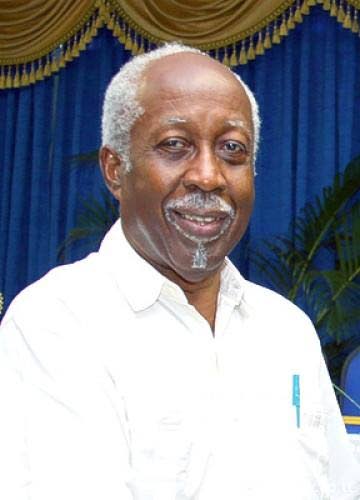Cockpit and related issues

Reginald Dumas
Pt I
THE RECENT CAL episode has unveiled matters which I hope can be clarified for the public at large. Here are a few.
First, the pilots insisted they weren’t taking industrial action (as workers in an essential service, they are forbidden to do so). But one might be forgiven for believing that if scores of them (the number varies up to 93) called in sick within a short period of time, this could hardly be seen as a sudden, coincidental health crisis. Was the Industrial Court therefore jurisdictionally correct in using the words “industrial action” to describe their behaviour, and directing the TT Airline Pilots’ Association (TTALPA) to have its members “immediately report for duty?”
But then, why did travellers inconvenienced by the pilots’ action appear so heavily to support the very pilots and to flagellate the CAL administration? Was this a result of what the inconvenienced were saying, that CAL was giving them inadequate or contradictory information, or no information at all?
Second, how has the swingeing 57 per cent pay cut accepted by the pilots some time ago (as a way, so I hear, to keep them all on the CAL payroll) affected the current discussions? (And seeing that one of the periods being discussed goes back as far as 2015 to 2018, I wonder if Public Service norms have infected the quasi-private sector?)
Third, in general, are pilots consulted on CAL’s operational plans? Or are they merely informed of decisions already taken?
Fourth, who in CAL oversees the negotiating process, giving guidance and directions to the airline’s negotiating team? I ask because TTALPA is reported as stating that the CAL CEO said he was not aware of the details of a proposal made to the union on August 15 by the CAL vice-president, human resources (at whom much pilot anger is directed). Yet the CEO is quoted as saying that “(a)ny proposals discussed between the union and CAL must be approved by the board of the airline and the Ministry of Finance.” Proposals discussed or draft agreements reached? Or both?
Is it therefore that the CEO is being bypassed? For instance, did he have prior knowledge of, or only a nodding acquaintance with, his VP’s reported proposal that a pilot’s minimum monthly guaranteed number of committed hours (on which pay is based) should be reduced from 75 to 60, resulting in a loss of income for the pilot? Is “committed time” the same as “flying time?” If not, what’s the difference? As a matter of interest, what, in actual practice, is the average number of hours a CAL pilot flies monthly?
Fifth, are CAL pilots really expected to work on their off-days and during their vacations? If so, why? When emergencies arise? Is this mandatory?
Sixth, has the CAL administration paid any attention to the advice it received two years ago from the International Federation of Airline Pilots’ Associations (IFALPA) on the need to treat pilots in accordance with worldwide industry standards (“last in, first out,” for example, and not “first in, first out”)? What about IFALPA’s offer of help?
Seventh, should CAL have called doctors said to have given pilots certificates of illness to “inform” them they might be subpoenaed to appear in court? Could such action be interpreted as threatening? If so, might there be legal implications?
Eighth, how are the statements by Minister Stuart Young that pilots have a sense of “entitlement,” and by Minister Stephen McClashie, even before he met the two sides, that the pilots’ request for a ten per cent salary increase was “unrealistic,” perceived by TTALPA?
Ninth, could such ministerial sentiments assist or hinder the work of the Cabinet sub-committee which is to “audit” the negotiations? And is the functioning of the CAL administration on the sub-committee’s agenda?
Tenth, how does the $14-15 million CAL says it spent on make-up flights, etc for stranded passengers compare with the cost of meeting the pilots’ requests?
Eleventh, the CAL CEO is reported as saying that, even during the height of the covid19 pandemic, pilots were receiving annual salary increments. But if CAL wasn’t then operating, why were the pilots receiving these upgrades? How do they compare with the 57 per cent pay reduction the pilots took during the same period? Was it agreed that, post-covid19, salaries lost by the reduction would be retroactively restored?
Twelfth, why is the CEO so confident that CAL is on course to make a profit in 2023? What kind of profit, by the way? Operational or other? And will CAL soon publish up-to-date audited accounts?
In my next article I will look, with some trepidation, at the matter of the airbridge between Tobago and Trinidad.


Comments
"Cockpit and related issues"